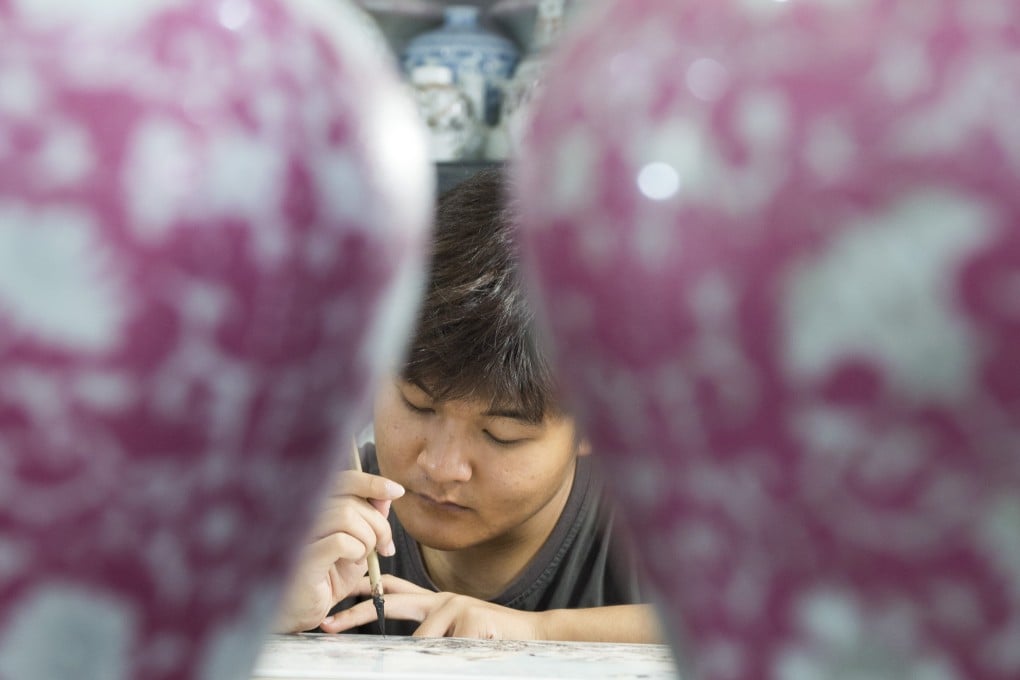China town: porcelain capital Jingdezhen, 2,000 years and still going strong
Jingdezhen, in Jiangxi province, has been producing exquisite handmade porcelain artworks for two millennia, but can its ancient techniques compete in a changing market?

The city’s airport is shaped like a vase, the high-speed railway station was inspired by two hands holding a teacup, and the white lamp posts lining the streets are adorned with classic artisanal patterns. For Jingdezhen, in Jiangxi province, it all comes back to one thing: porcelain.
“I guess no other place has survived 2,000 years doing just one thing,” says Xiong Jianjun, founder of the prestigious porcelain company that bears his name.
In 2019, nearly 15 per cent of the city’s 1.1 million residents were directly employed by more than 6,700 porcelain companies, according to official figures, and the industry accounts for almost half of Jingdezhen’s 92.6 billion yuan (US$13.8 billion) gross domestic product.
According to the local folk museum, archaeological studies set the origins of what it calls “the world’s first industrial city” in the late Han dynasty, around AD150.
“The government has realised innovation is the only way to compete with cheap china from Dehua or Chaozhou and the authorities are encouraging both the restoration of ancient techniques and the development of new globally appealing and more modern designs.”
“Artisans were the first to use division of labour,” explains one exhibit, but it was only in the Song dynasty (960-1279) that this riverside city, nestled amid lush mountains, started to produce the fine porcelain that the emperors demanded.
